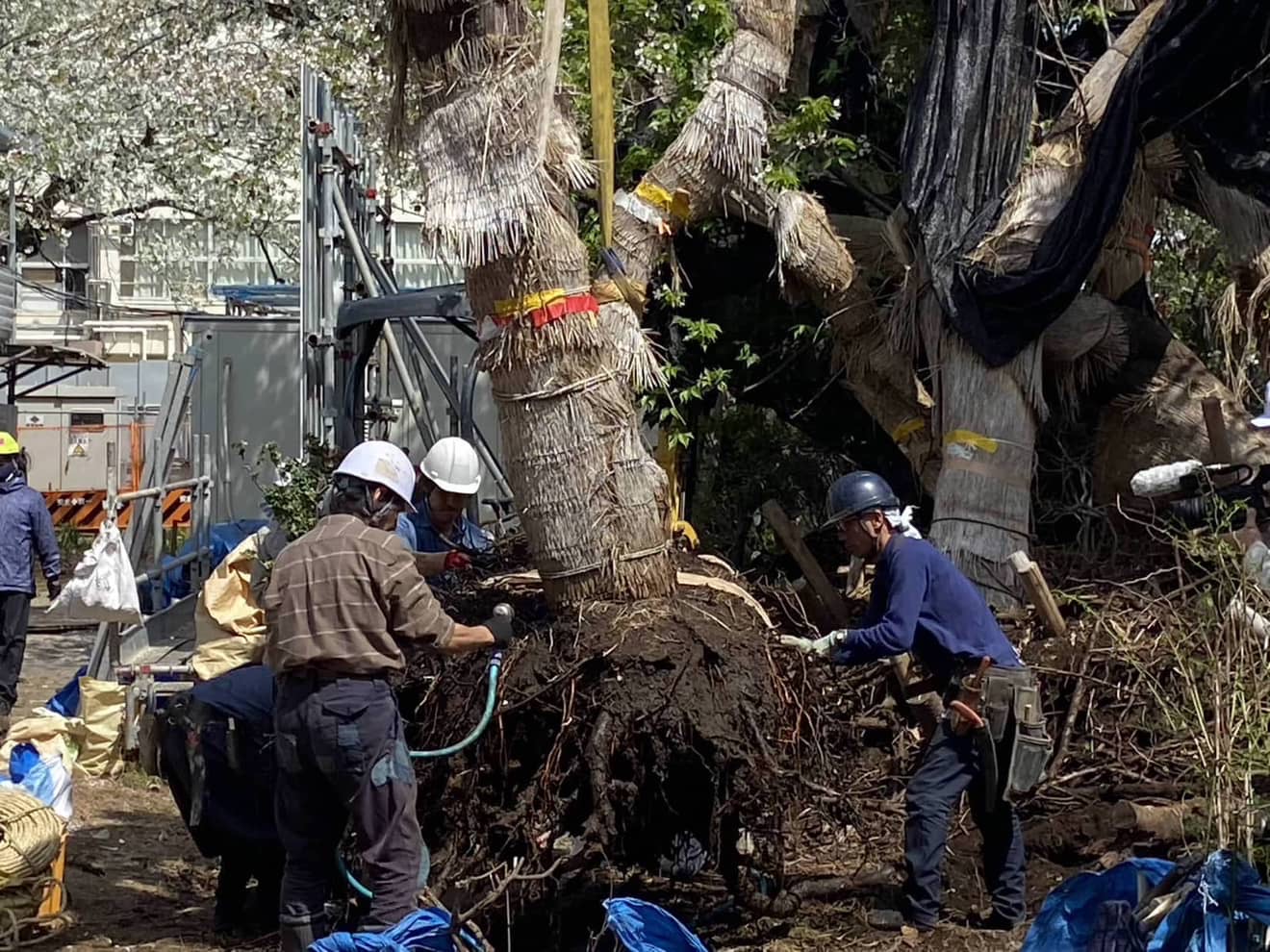
環
2024-05-12
Participating in the ‘Daichi no Saisei’ Cherry Blossom Transplant Project
No items found.
Located near Higashiyamakita Station in Yamakita Town, Kanagawa Prefecture, I purchased a traditional Japanese-style residence with a Japanese garden almost 29 years ago, at the end of last year. While the initial impression was of a splendid building, I felt uncertain about how to maintain the Japanese garden.
Six months have passed since negotiating with the real estate agent and purchasing the property. From a well-maintained condition, the trees in the garden have now grown excessively. It was clear that I needed to urgently seek the services of a gardener.
Through a recommendation, I was introduced to someone involved in ‘Daichi no Saisei (Regeneration of the Earth)’ activities.
As we discussed matters in the garden, I sensed that this was not an ordinary encounter.
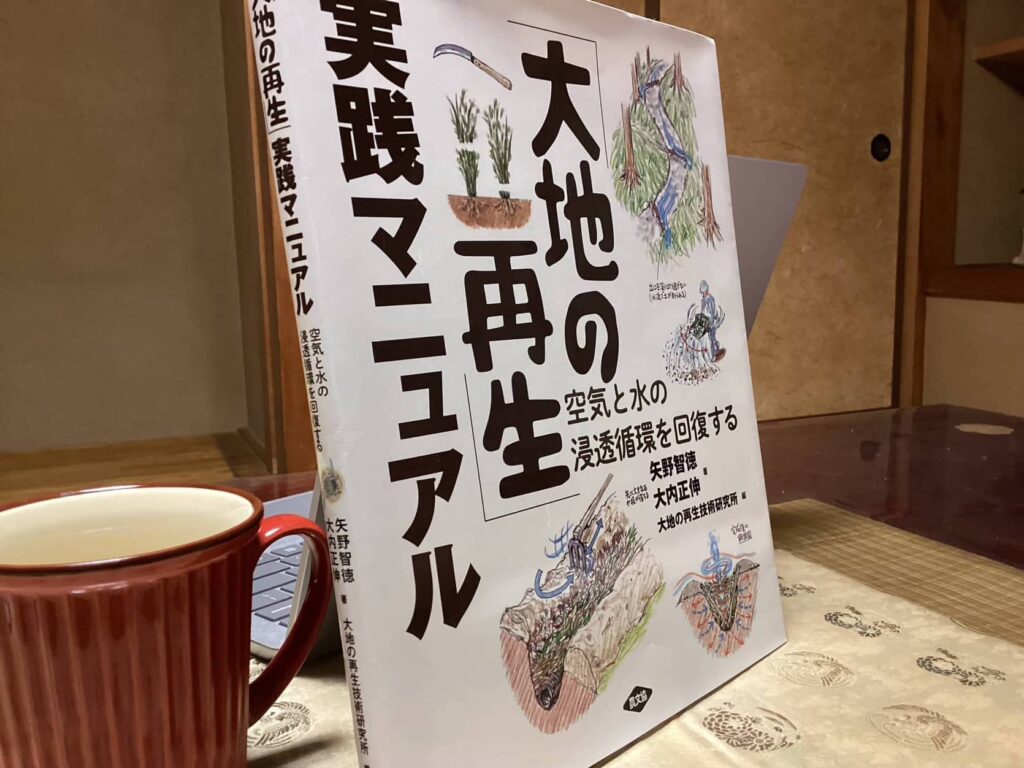
Weeds can be quite troublesome, right? Almost everyone thinks so. However, I really don’t want to use herbicides. I’m not a fan of chemicals. Spraying herbicides might seem easy and convenient, but the environmental impact is significant. While the herbicide package may appear harmless, simply killing the weeds won’t solve the problem.
The person from “Daichi no Saisei began an intriguing conversation, wielding a sickle, a transplanting tool, and pruning shears. I didn’t even know how to use those tools.
“You don’t pull out weeds by the roots.”
Huh?!
Apparently, weeds have a purpose and belong where they grow. They connect the visible world we see with the invisible world underground. In my understanding, weeds anchor themselves in a spot, providing air and retaining water while interacting with microorganisms.
Being mindful of the flow of water and wind, we move the sickle along the wind, cutting weeds and branches. Human intervention mimics the flow of the wind, shaping the weeds and branches to ensure their comfort.
The transplanting tool is used to dig or create holes while considering the flow of water.
Humans aren’t the main focus here. Plants and microorganisms take center stage.
While I agreed with the principles of Synecoculture farming (read here), encountering “Daichi no Saisei” was eye-opening for someone like me, who had previously seen weeds as troublesome adversaries.
A few days later, I received the following message from the “Yui no Mori Office” through a person.
The support for the Noto Peninsula earthquake-affected areas and the reconstruction of the Kunitachi Daini Elementary School are public activities based on the “Mori Foundation,” a general incorporated foundation established last December.
Both urban and rural areas are being devastated by human development, and natural disasters are adding to the challenges. In the midst of this, our activities are like hummingbirds carrying a drop of water to a raging fire, but we also realize that by allowing air and water to flow through the earth with human hands, there can be a chain reaction of positive changes.
We ask for your cooperation in the “Daichi no Saisei, regeneration of the earth” to transform the current “negative chain” into a “positive chain.” We once again ask for your support. The relocation work of the trees at Kunitachi Daini Elementary School has begun in March, and this month we are recruiting volunteers to help with the preparation of materials such as rough cloth, charcoal, branches, and bamboo, as well as those who can assist with the relocation work at the school.
In the elementary school work, there are tasks such as removing branches placed under the roots after craftsmen dig up large trees and spreading charcoal, which can be a valuable experience. Even if you can’t participate for a whole day, your help is greatly appreciated. Please consider lending a hand.
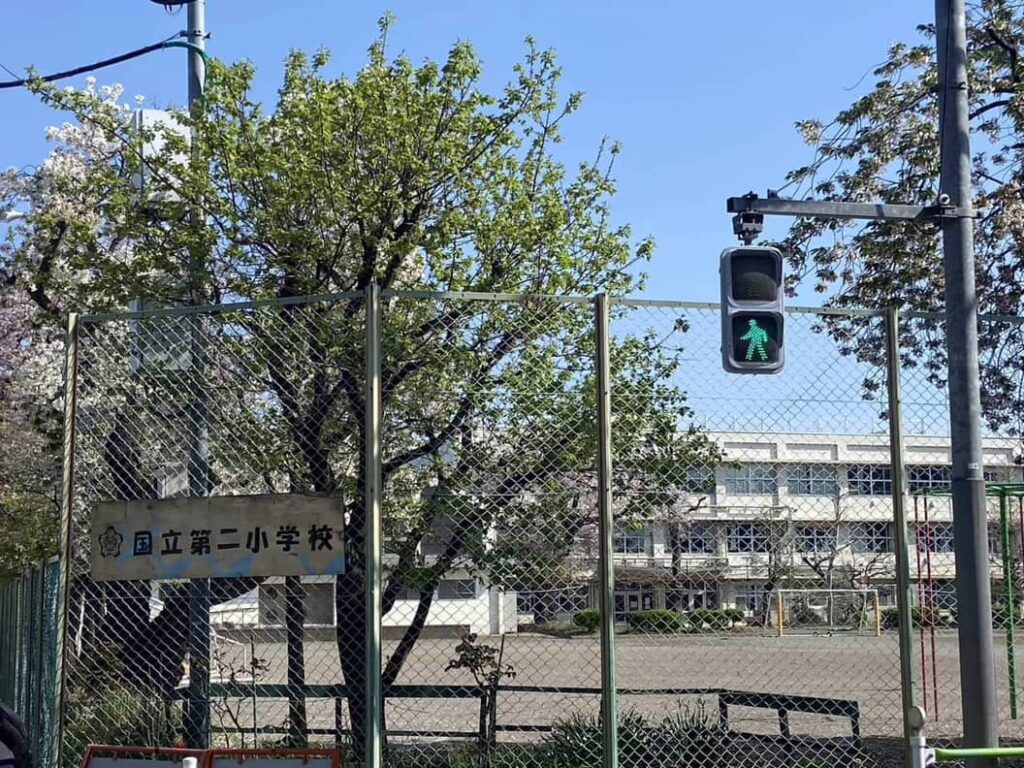
I immediately decided to visit the site.
The incident began when parents noticed that 100 cherry blossom trees, which children had grown accustomed to along the entrance gate of the school, were being cut down due to the construction of a new school building, prompting them to take action.
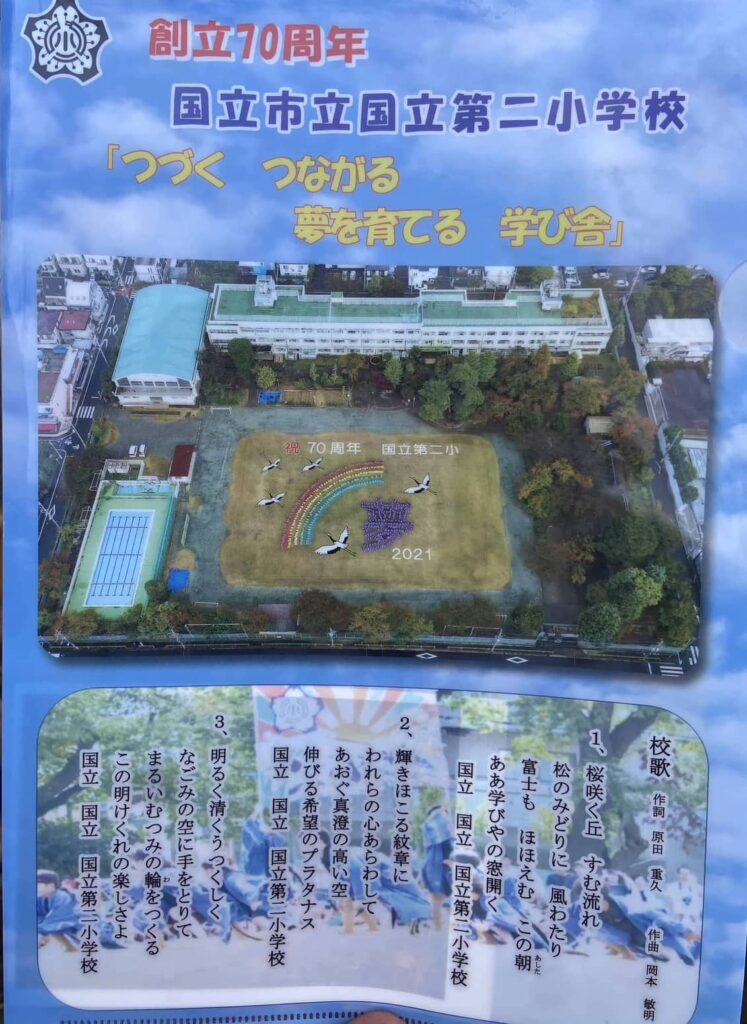
The Kunitachi Daini Elementary School in Kunitachi City, Tokyo, celebrated its 70th anniversary.
As you can see from the photo, the elementary school was surrounded by many trees. As the school song begins, “Cherry Blossoms Blossoming Hill,” the cherry trees have been a symbol of the elementary school.
At the end of last year’s Golden Week, 42 of the 100 trees were preserved, and temporarily transplanted along the fence.
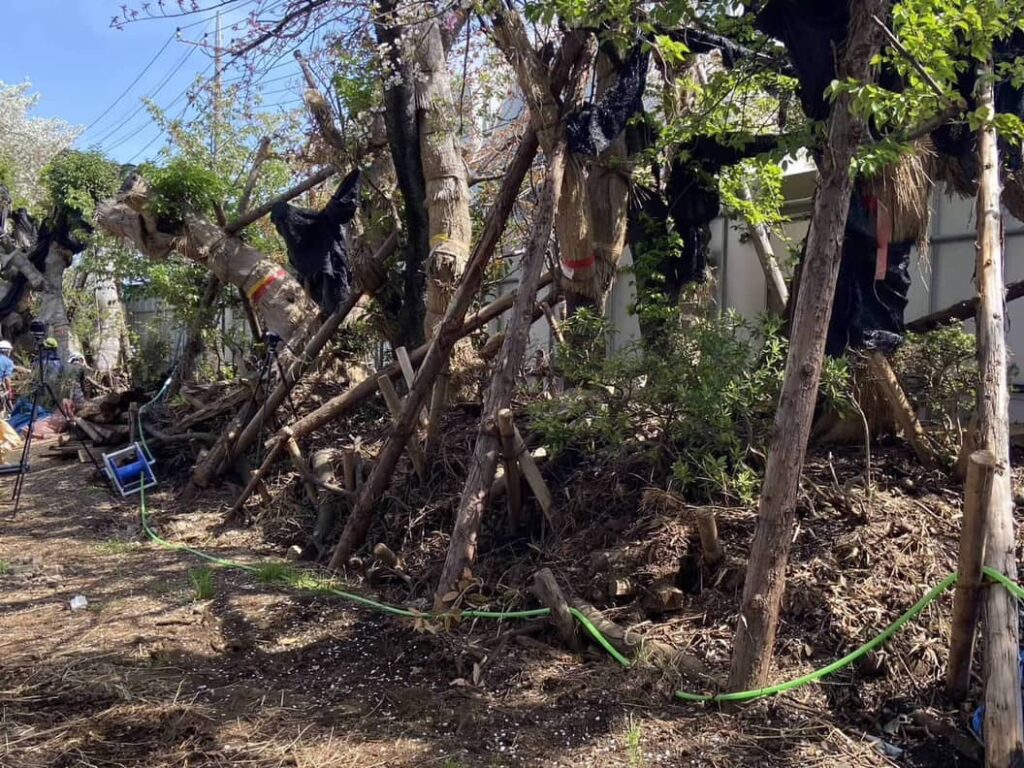
For nearly a year, the cherry blossom tree has been living in this transplanted place. I was able to visit this area during the cherry blossom season and see the transplanted cherry blossom trees blooming beautifully.
The transplanted cherry blossom trees were carefully nurtured. Even in their temporary location, it is necessary to provide an environment where the trees can live healthily. It is important to protect the cherry trees while also ensuring the safety of the children attending the elementary school.
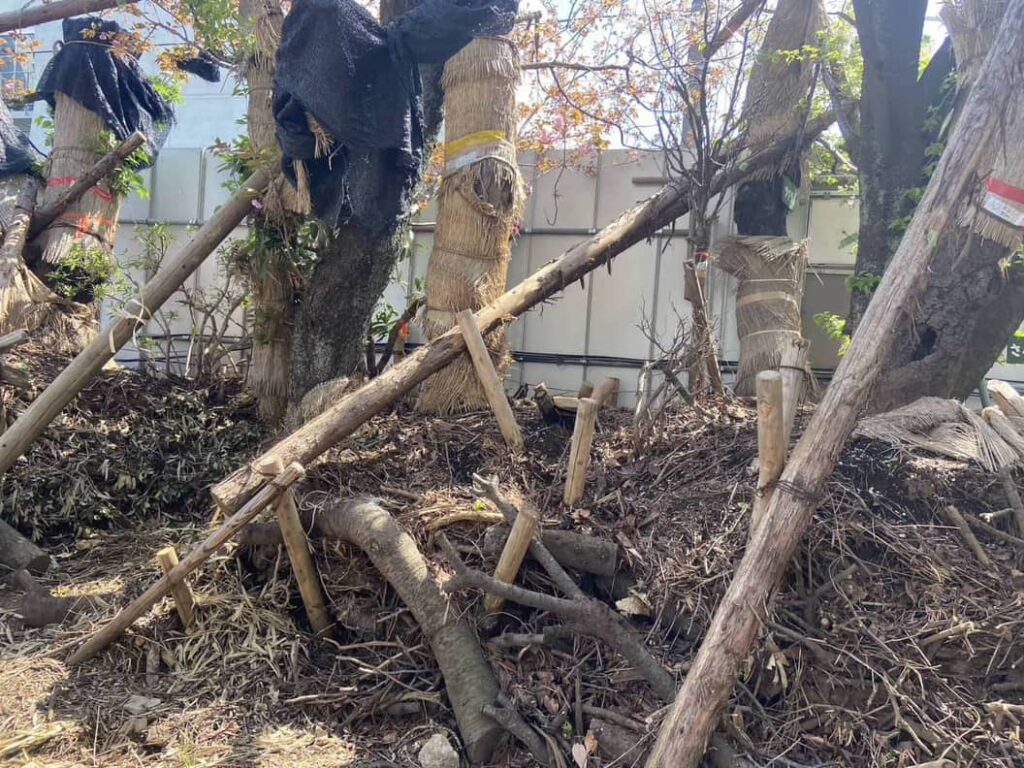
Some neighbours and parents who were not familiar with the site reportedly expressed concerns about the safety of the trees potentially falling over. While this photo may not convey everything, the trees are securely fixed with organic materials. Personally, I did not sense any danger. It is clear at a glance that the air and water flow well around the trees.
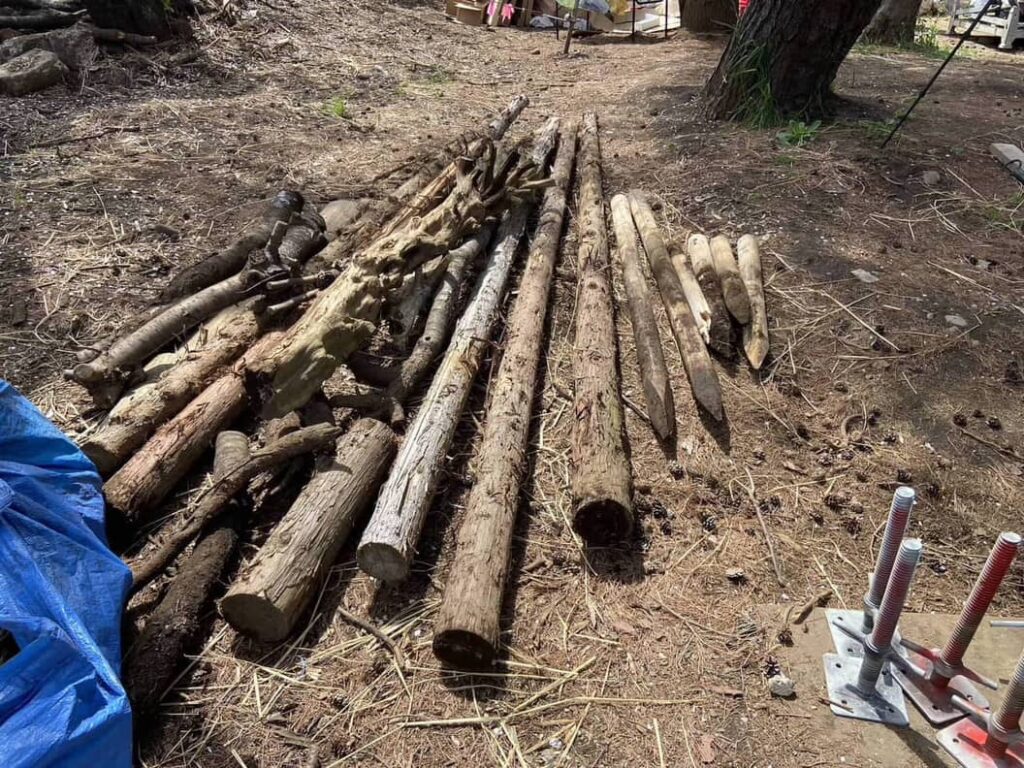
It has been almost a year since the trees were temporarily transplanted. The permanent transplanting process has now begun. The trees in this state will be loaded onto trucks this time.
The cherry blossom trees, which have watched over the children along with the long history of the elementary school, are now embarking on a journey to a new location while connecting lives.
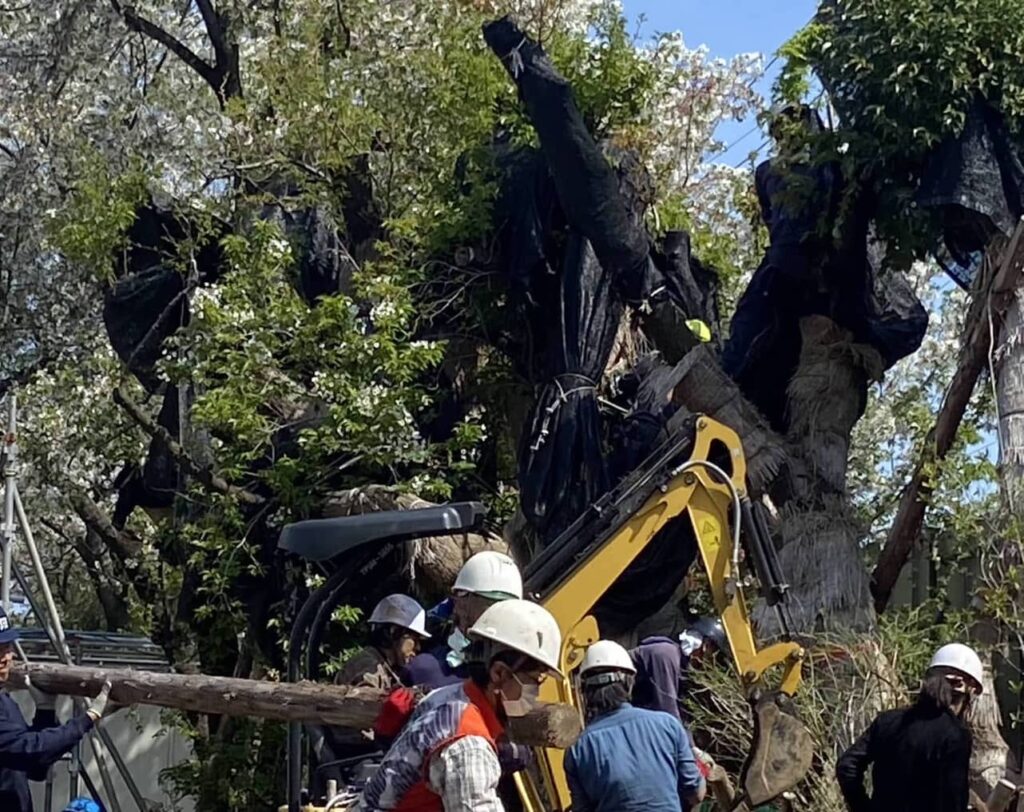
Here comes the excavator.
Stakes and other materials around the roots of trees to be transplanted are removed by excavators and human hands.
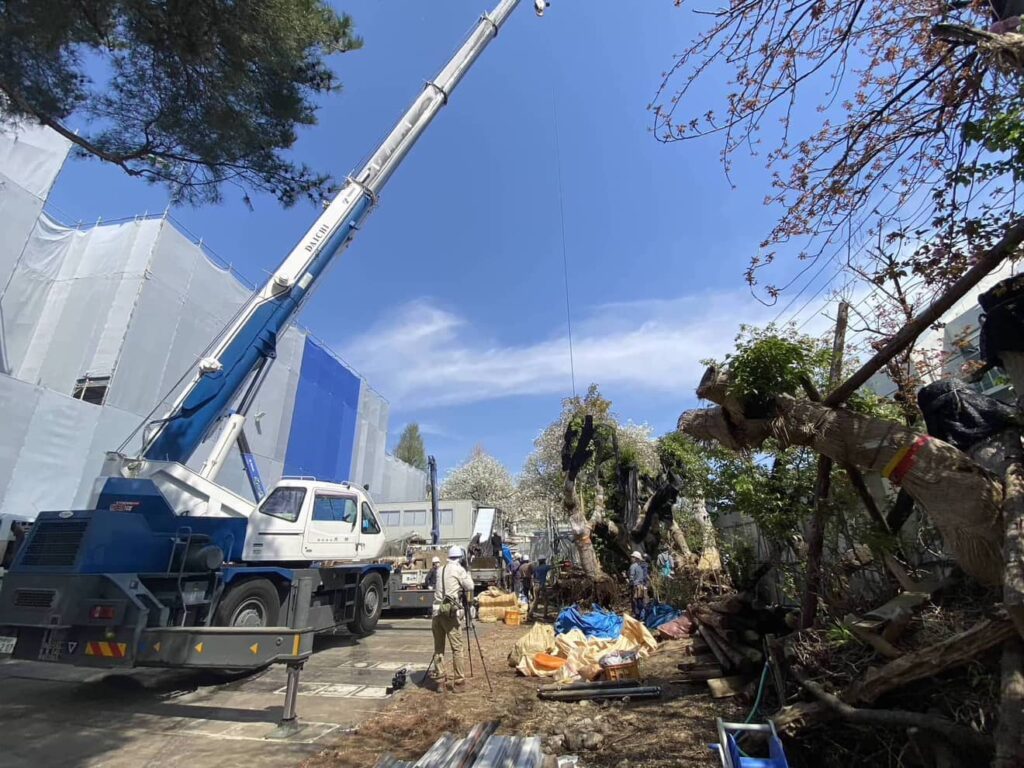
A crane truck is lifting a tree.
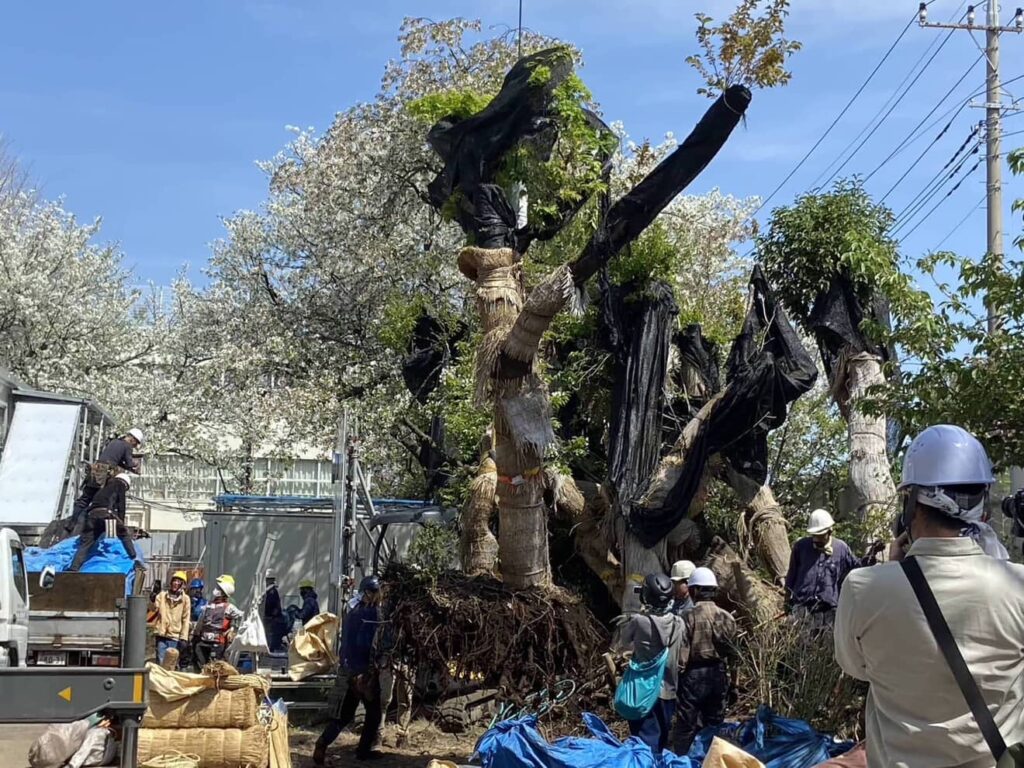
The tree floated in the air! I was thrilled, as this was the first time I had ever seen such a scene.
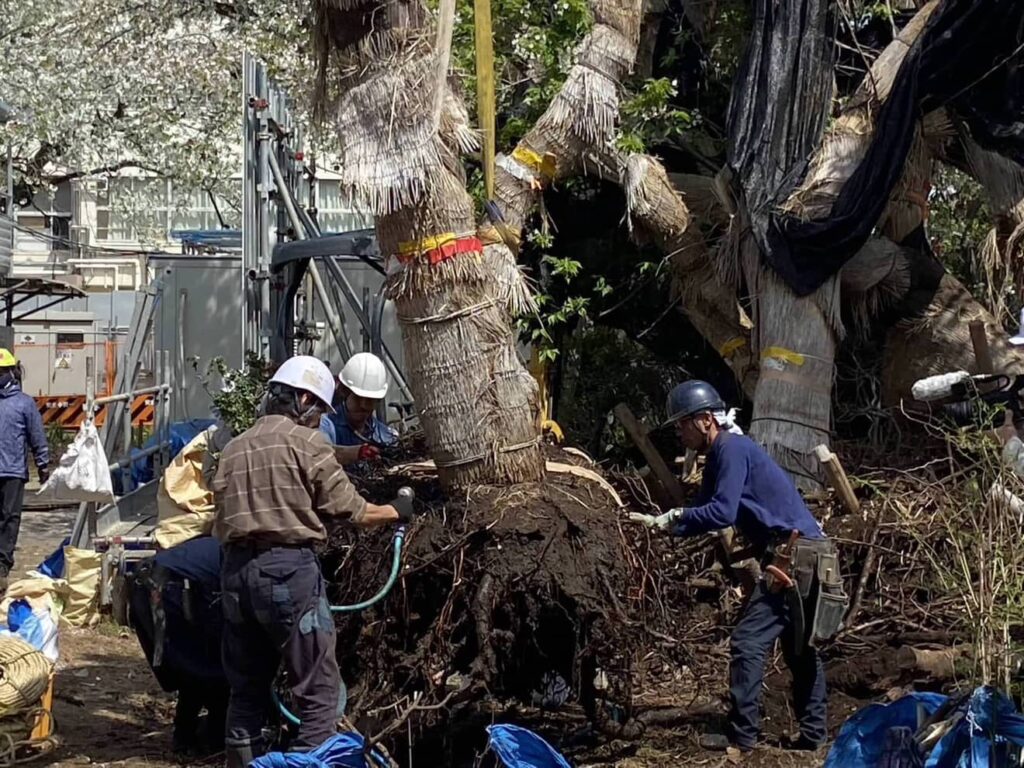
The trees are lifted by crane trucks and given plenty of water.
The work continues in order to put as little stress on the trees as possible for the long journey ahead by truck.
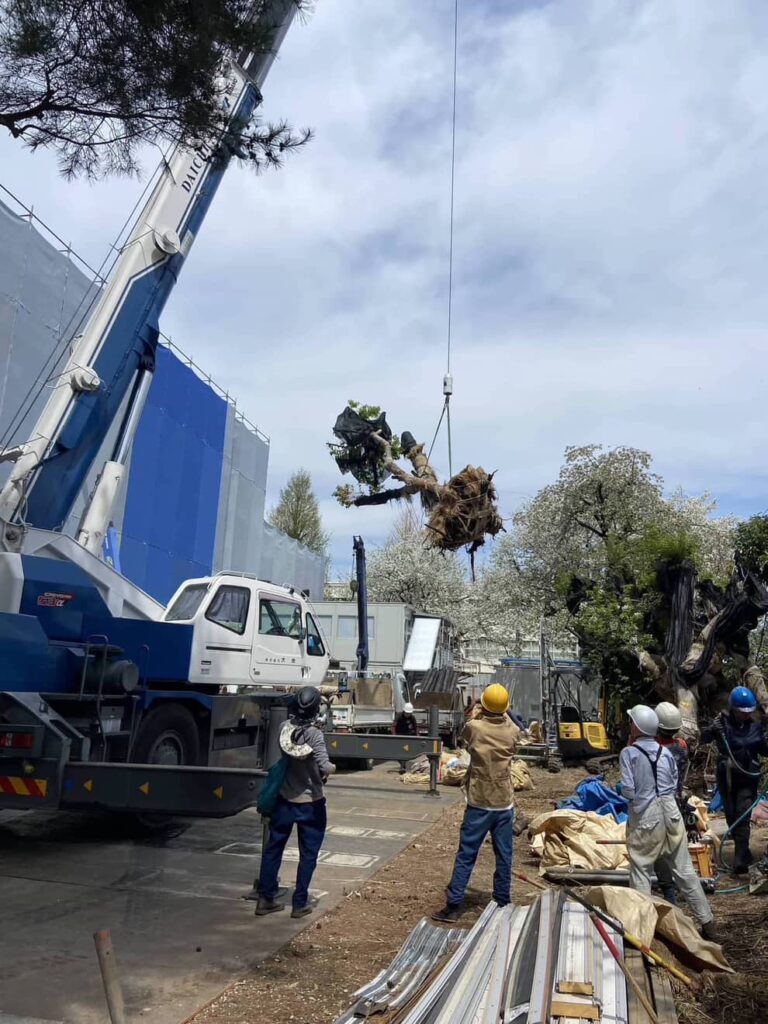
Further up in the sky, a crane truck lifted the tree into the air. It was an impressive sight.
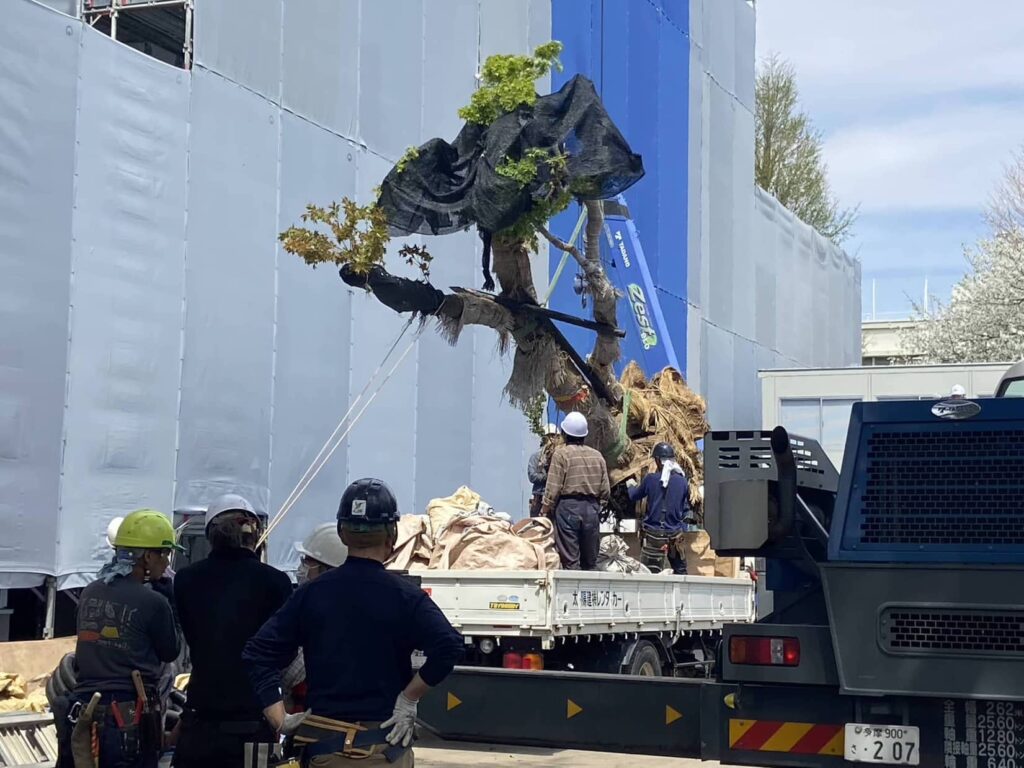
Once the tree was loaded onto the truck, its height was adjusted. As long as it can pass through the gate, there is no need to worry about its height during the long journey ahead. And now, it’s time to depart, with the children waving goodbye.
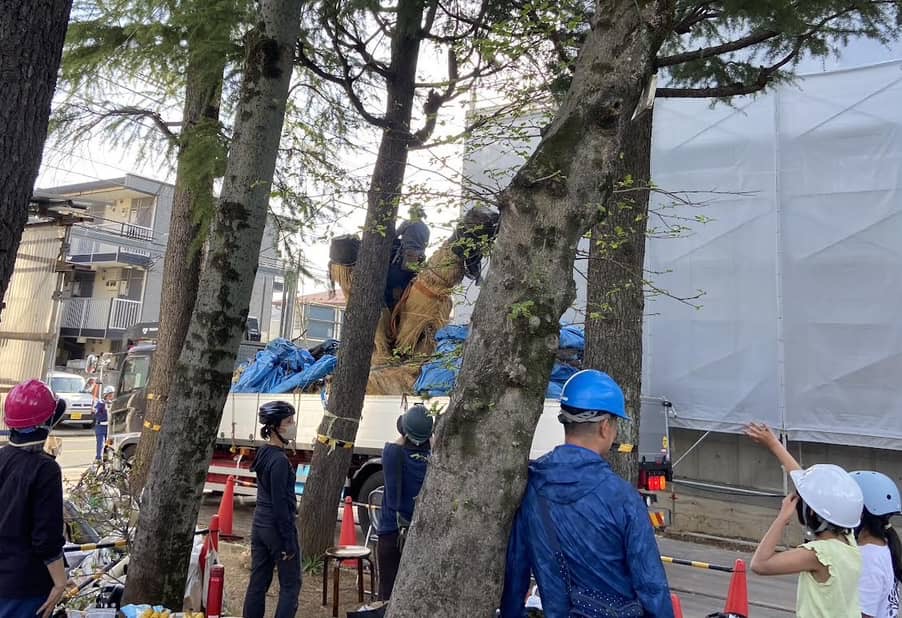
I was able to see and experience a work site like this for the first time this time. I tried to help with the work a little, but being my first time, I ended up just being confused. I’m sorry.
However, the experience of watching the work in front of me, actually carrying simple things, and digging a little soil to create a path for water flow was very refreshing.
The importance of connecting lives.
Trees and plants, like humans, breathe by taking in air and water to live. “Without air and water, we cannot survive.” Truly, just like humans, these creatures are our companions living together on this Earth.
The circulation of air and water, essential for life, is supported by plants. I realize that in today’s society, humans are thoughtlessly disrupting these cycles, causing distress to the trees in the forests and plants around us.
This distress leads to various phenomena in an attempt to be freed from it. Many so-called natural disasters are actually man-made disasters. Yet, most people are unaware of this.
What goes around comes around to humans eventually.
Connecting with the life of a single cherry blossom tree is connected to each of our lives. As humans who fail to recognize even the life of a single tree as precious, where are we headed? In our daily lives, we show affection to pets and plants in our gardens, but we often neglect other living beings.
This experience has made me reflect on many things.